Flower bouquet are a cherished way to express emotions and celebrate special moments. Selecting the right bouquet size is essential, whether for intimate gatherings or grand events. The dimensions of the arrangement play a vital role in enhancing the occasion and conveying your intended message.
Understanding bouquet dimensions is essential for selecting the perfect one for any occasion. This guide offers an in depth look at typical bouquet sizes, factors that influence these dimensions, and practical tips for creating or choosing the right arrangement.
Understanding Flower Bouquet Dimensions
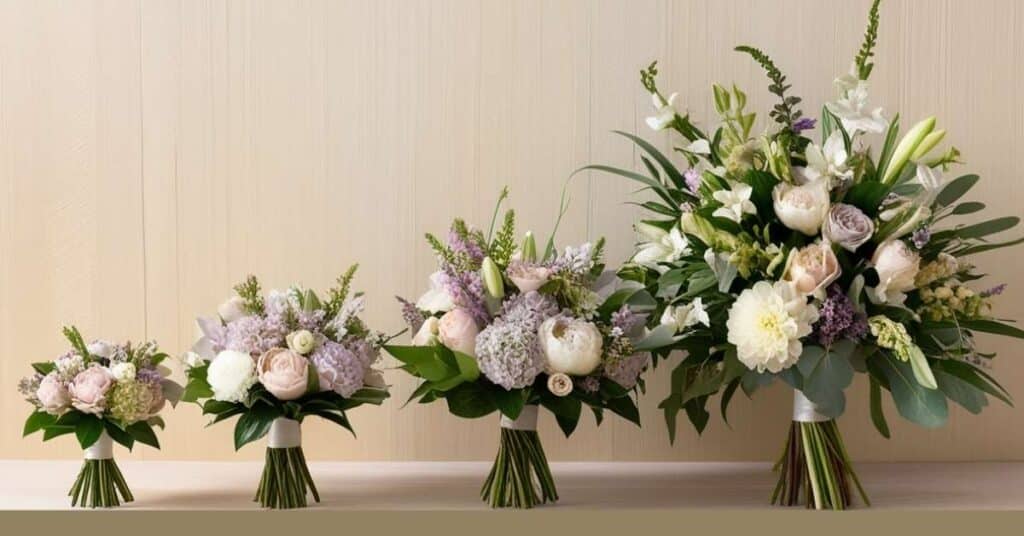
Flower bouquet can range widely in terms of shape, size, and arrangement style. For any bouquet, two primary measurements define its dimensions:
- Diameter: The width across the bouquet.
- Height: The measurement from the base of the stems to the top of the flowers.
Each bouquet’s dimensions affect its overall impact, and choosing the right size can depend on factors such as the occasion, the setting, and the recipient.
Standard flower Bouquet Sizes and Uses
Bouquets can be categorized by size, each suited to specific events or uses. Here’s a breakdown of typical flower bouquet sizes and when they’re most appropriate:
| Size | Diameter | Common Uses |
| Mini | 6-8 inches | Bridesmaids, small gifts, flower girls |
| Standard | 10-12 inches | General gifting, small centerpieces, personal bouquets |
| Large | 14-16 inches | Bridal bouquets, formal arrangements, large centerpieces |
| Extra Large | 18+ inches | Grand events, oversized displays, focal pieces |
Each size has a specific purpose. Mini bouquets add charm without overwhelming, standard bouquets are versatile for many occasions, while large and extra-large bouquets create a striking impact for formal settings.
Key Measurements for Flower Bouquets

Explore essential measurements to create the perfect flower bouquet for any occasion.
Diameter
The diameter of a bouquet, its width from one side to the other, plays a significant role in how it is perceived:
- Small bouquets generally have a diameter of 6-8 inches, ideal for intimate gatherings.
- Medium sized or standard bouquets typically range from 10-12 inches and are versatile enough for most settings.
- Large bouquets measure about 14-16 inches in diameter and suit grander occasions like weddings.
- Extra large bouquets can reach 18 inches or more, creating a dramatic effect for major events.
Height
A bouquet’s height can vary based on the flower types and styles:
- Short bouquets are around 8-10 inches tall and work well for posy or compact hand tied arrangements.
- Medium height bouquets generally measure 12-16 inches and offer a balanced look that works for gifting or small centerpieces.
- Taller bouquets, often around 18-24 inches, are typically used for cascading or formal designs.
Understanding both the height and diameter of a bouquet can help you choose one that perfectly complements the intended setting and purpose.
Read Further “How Big is New York City? Dimensions and Population Over Time”
Factors Influencing Flower Bouquet Dimensions
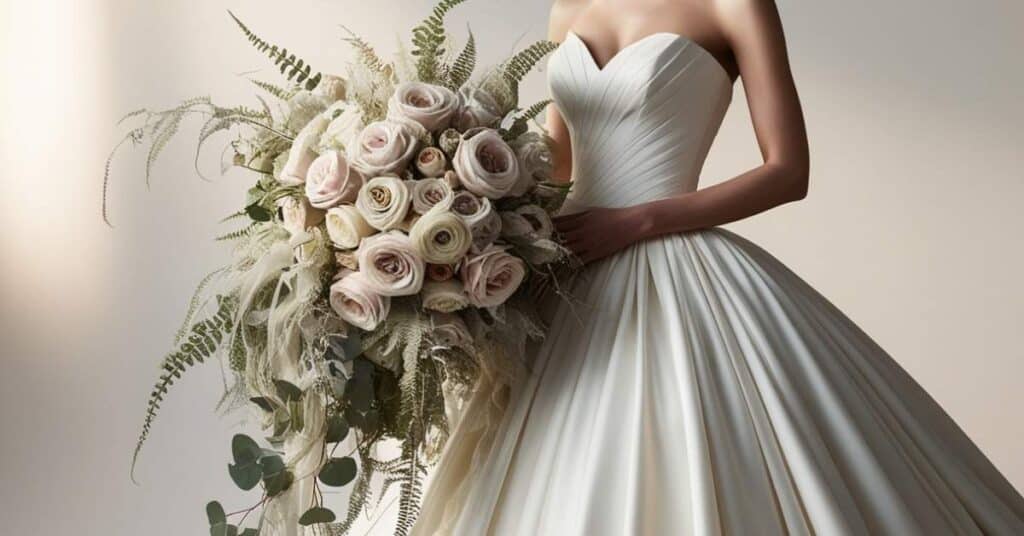
When designing or selecting a bouquet, several elements can impact its final dimensions. Here’s a closer look at these factors and how they shape the size of the bouquet.
Flower Type and Bloom Size
The type and size of flowers used can significantly affect the bouquet’s overall dimensions:
- Large Blooms: Flowers like hydrangeas, sunflowers, and peonies have large heads, requiring fewer stems to fill space and create a substantial appearance.
- Medium Blooms: Roses, tulips, and daisies offer medium sized blooms that allow for versatility in design, filling out bouquets without overwhelming them.
- Small Blooms: Flowers like baby’s breath, spray roses, and lavender are delicate and perfect for smaller bouquets or as fillers to add texture.
Example
A large bridal bouquet with hydrangeas and roses might need only 10-15 stems, while a bouquet using smaller blooms like daisies could use 20-30 stems to achieve a similar visual impact.
Stem Length
The length of the stems plays a crucial role in determining the height and style of the bouquet:
- Short Stems: Ideal for posy or hand tied bouquets, typically around 8-10 inches in length.
- Medium Length Stems: About 12-16 inches, often used for gifting and smaller centerpieces.
- Long Stems: Stems 18 inches or more are typically used for grander, cascading bouquets that require a longer structure.
Arrangement Style
The style of the bouquet impacts its width and overall shape, with some styles naturally requiring larger dimensions than others.
- Hand Tied Bouquets: Compact and round, typically around 8-12 inches in diameter, these bouquets have a natural, balanced appearance.
- Cascade Bouquets: With a long, flowing shape, cascade bouquets often range from 10-12 inches wide and 18-24 inches in length.
- Posy Bouquets: Small, round, and easy to hold, posy bouquets measure around 6-8 inches, making them ideal for children or bridesmaids.
- Wildflower Bouquets: Loose and informal, with a range of diameters between 10-16 inches, depending on the desired fullness.
Check it Out Our Article “How Big is 2 Inches? 15 Everyday Items for Comparison”
Flower Bouquet Dimensions by Occasion
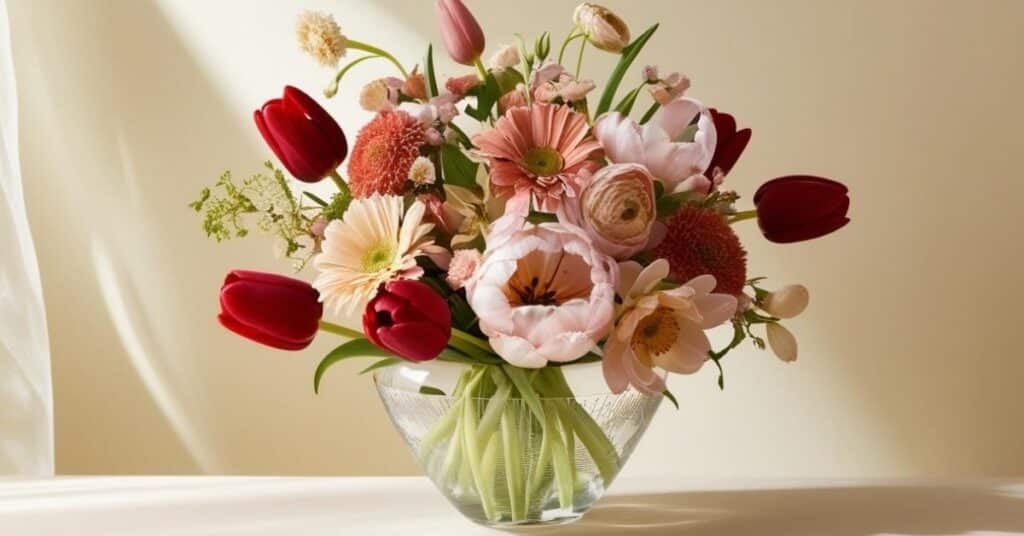
Different occasions call for different bouquet sizes. Here is a guide to help you select the ideal bouquet for a variety of events.
Weddings
Weddings demand carefully selected flower bouquet sizes and styles to match the aesthetic and significance of the event.
- Bridal Bouquets: Larger bouquets, typically between 12-16 inches in diameter, to create a focal point.
- Bridesmaids’ Bouquets: Usually smaller, around 8-10 inches, complementing the bridal bouquet without overshadowing it.
- Flower Girl Bouquets: Mini bouquets, generally about 6 inches, for a charming, manageable arrangement.
Anniversaries and Birthdays
For anniversaries and birthdays, a mid sized bouquet (10-12 inches) is often ideal, balancing elegance and manageability. Consider a mixed flower arrangement with roses, lilies, or daisies for a beautiful and thoughtful gift.
Graduations and Achievements
Mini bouquets (6-8 inches) or standard sizes (10 inches) work well for graduations or recognition events. Compact bouquets are easier to carry and feel more personal while adding a celebratory touch.
Home and Office Decor
When choosing a bouquet for home or office decor, consider the space where it will be displayed:
- Centerpieces: Larger arrangements (12-16 inches in diameter) for dining tables or living rooms.
- Desks and Entryways: Smaller arrangements (6-10 inches) offer a hint of elegance without occupying too much space.
Funerals and Memorials
Bouquets meant for remembrance are typically understated. Sympathy flower bouquet are often between 8-12 inches, allowing the focus to remain on simplicity and respect.
Read More About “How Long is 999 Seconds? Practical Insights and Fun Facts”
Popular flower Bouquet Styles and Dimensions
Each bouquet style comes with specific characteristics that influence its dimensions. Here is a look at some common styles and their typical sizes.
Hand Tied Bouquets
- Description: Round and symmetrical, with a natural, organic appearance.
- Dimensions: 8-12 inches in diameter; usually medium height (10-15 inches).
- Ideal For: Casual events, birthdays, and small weddings.
Cascading Bouquets
- Description: Flowing and dramatic, with flowers spilling downwards.
- Dimensions: 10-12 inches wide and 18-24 inches long.
- Ideal For: Formal weddings and events where a dramatic look is desired.
Posy Bouquets
- Description: Small, compact, and round; easy to carry and hold.
- Dimensions: 6-8 inches in diameter; typically short stemmed (8-10 inches).
- Ideal For: Bridesmaids, flower girls, and small gatherings.
Round Bouquets
- Description: Classic, full circle arrangement with an elegant, symmetrical look.
- Dimensions: 10-14 inches in diameter; medium height (12-16 inches).
- Ideal For: Weddings, formal occasions, and anniversaries.
Wildflower Bouquets
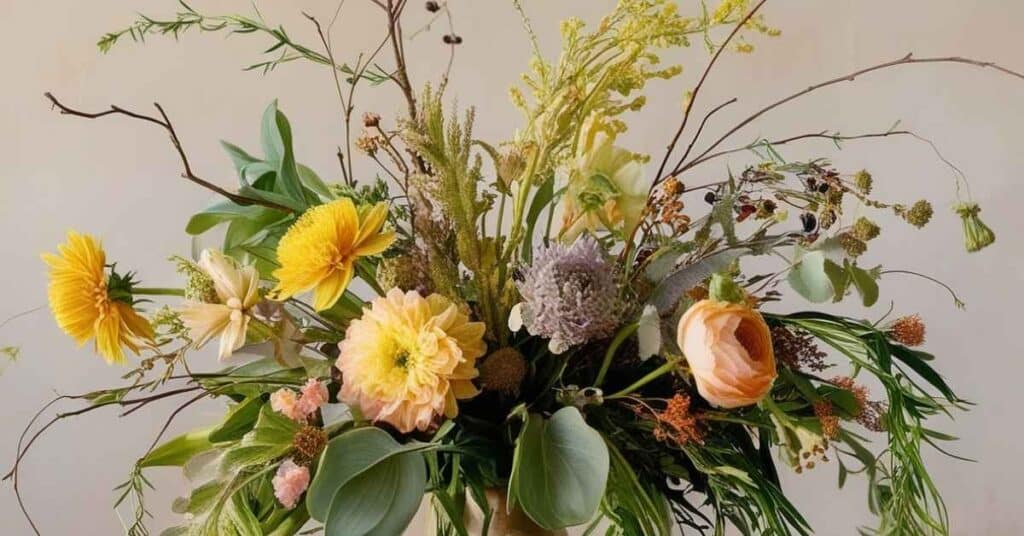
- Description: Loose, organic, and full of varied textures and colors.
- Dimensions: 10-16 inches in diameter; typically with varying stem lengths.
- Ideal For: Rustic or outdoor weddings, casual events, and home decor.
For further informatiot “12 Things and Animals That Are 10 Feet Long”
Tips for Choosing Flower Bouquet
Selecting the right bouquet size is not just about picking flowers; it’s about matching the bouquet to the occasion, recipient, and setting. Here are some practical tips:
- Consider the Vase or Holder: Tall vases suit long stems, while compact vases work better with shorter stems.
- Match the Bouquet to the Space: A large arrangement may overwhelm a small room, while a small bouquet may feel lost in a large space.
- Balance Size with Comfort: For a bouquet intended to be held, such as at a wedding, ensure it is comfortable for the recipient to carry.
Extra Tips for a Personal Touch
- Color Scheme: Selecting colors that match the event or recipient’s preferences can add a personal touch without altering the size.
- **Fillers and Green
Why Flower Bouquet Dimensions Matter
Flower bouquets are more than just arrangements; they convey emotions, symbolize love, and enhance any setting’s beauty. Understanding bouquet dimensions is crucial, as size impacts both the aesthetic appeal and the practicality of the arrangement. Here’s why dimensions matter:
Emotional Impact
The emotional response elicited by a bouquet can be influenced by its size. Larger bouquets often symbolize grand gestures, love, or celebration, making them suitable for weddings and anniversaries. In contrast, smaller bouquets can convey more intimate emotions, making them ideal for personal gifts or thank you gestures.
Examples of Emotional Connections:
- A large, cascading bouquet can create a stunning visual impact at a wedding, symbolizing the grandeur of the event.
- A mini bouquet given as a token of appreciation can feel personal and thoughtful, showing the recipient that you care.
Practicality in Presentation
When considering bouquet dimensions, practicality is just as important as aesthetics. A bouquet that is too large may be cumbersome to hold or carry, while a bouquet that is too small may not make the desired statement. For example:
- At weddings, brides may prefer a larger bouquet for visual impact during photo sessions, but should also consider ease of carrying.
- In corporate settings, smaller bouquets are often preferred for desks to avoid clutter and maintain professionalism.
Aligning with Venue and Theme
Each venue has its characteristics, and understanding bouquet dimensions can help align the arrangement with the venue’s ambiance and overall theme.
Matching Dimensions to Venues:
- A large banquet hall can accommodate larger floral displays that fill space and enhance the overall décor.
- Intimate spaces like homes or small restaurants benefit from smaller, more personal arrangements that do not overwhelm the environment.
Continue Reading “What Are The Dimensions of a Pringles Can?”
Cultural Significance of Bouquet Sizes
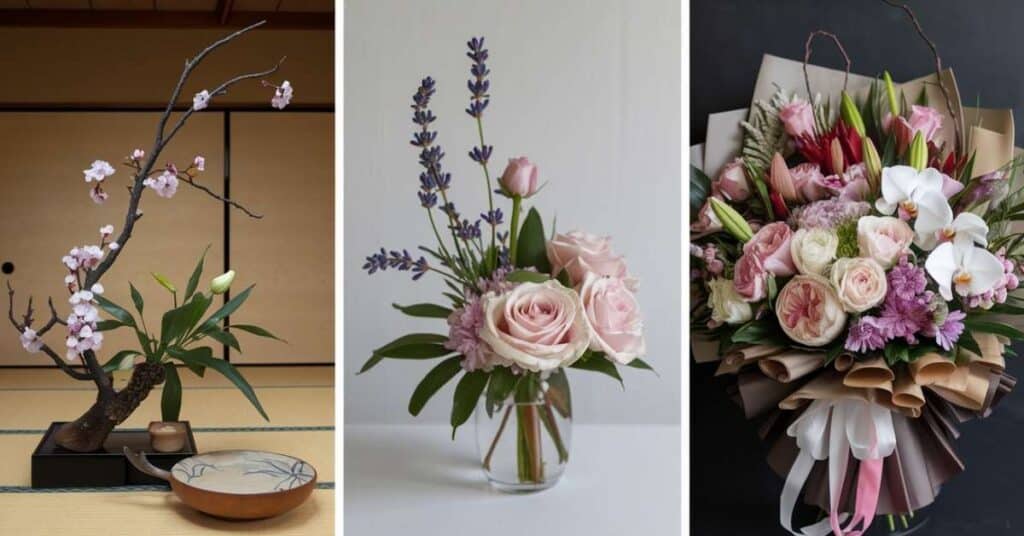
Different cultures have varying norms regarding bouquet sizes, often influenced by traditions and symbolism. Understanding these can help in selecting the right bouquet for culturally significant events.
Cultural Insights:
- In Japanese culture, flower arrangements (Ikebana) emphasize minimalism, often resulting in smaller, more thoughtfully arranged bouquets.
- In Western cultures, larger bouquets are often favored for weddings and celebrations, emphasizing abundance and joy.
flower Bouquet Styles
Exploring more bouquet styles and their dimensions can help broaden your understanding of what options are available and how they can fit specific needs.
Biedermeier Bouquets
- Description: This style features concentric circles of flowers, creating a round, compact design.
- Dimensions: Usually 10-12 inches in diameter and about 10-14 inches tall.
- Ideal For: Formal events, particularly weddings where symmetry is essential.
Arm Sheaf Bouquets
- Description: A hand held bouquet that extends in one direction, allowing for a more dynamic, flowing look.
- Dimensions: Typically around 12-16 inches in height and 6-10 inches in width.
- Ideal For: Weddings and special occasions where movement is desired.
European Hand Tied Bouquets
- Description: Similar to traditional hand tied bouquets but often features a looser, more relaxed style.
- Dimensions: Approximately 10-14 inches in diameter and can vary in height from 10-18 inches.
- Ideal For: Casual events or home decor, providing a natural look.
Floral Crowns
- Description: Bouquets worn on the head, often made of flowers and greenery intertwined.
- Dimensions: Typically 6-10 inches in diameter, depending on the design and the number of flowers used.
- Ideal For: Festivals, weddings, and other celebrations where a whimsical touch is desired.
Read Further “10 Everyday Items That Are 10 Centimeters Long”
Crafting Your Own flower Bouquet
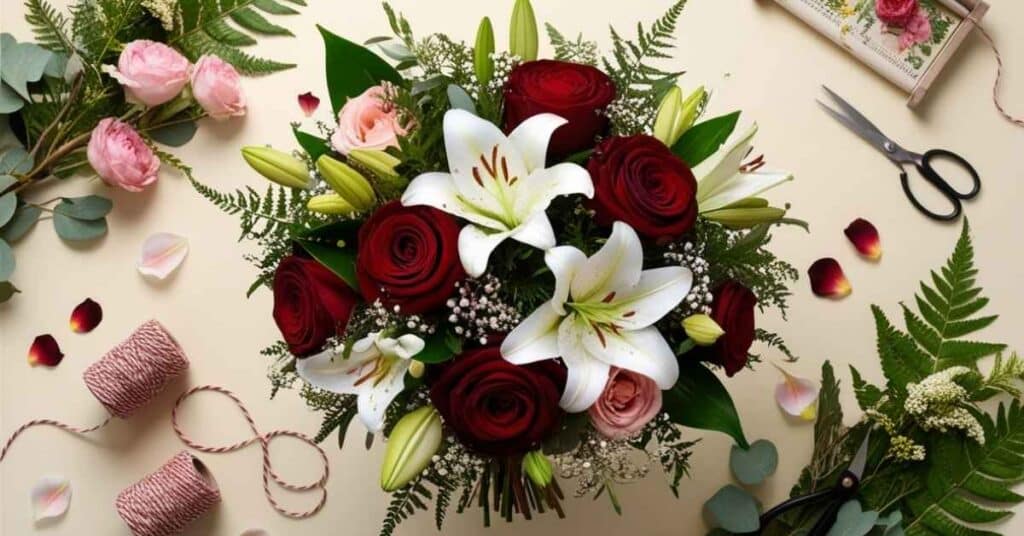
When crafting your own bouquet, consider these simple steps:
- Choose Seasonal Flowers: Selecting flowers that are in season ensures freshness and vibrancy.
- Mix Textures: Combine various flower types for an interesting visual contrast.
- Add Foliage: Incorporate greenery to enhance the bouquet’s overall look.
Additionally, consider sustainable sourcing. By purchasing flowers from local farms, you not only support the community but also reduce the environmental impact of long-distance transportation.
This thoughtful approach to both crafting and sourcing your bouquet ensures a beautiful arrangement that aligns with your values.
Sustainable and Ethical Flower bouqet Sourcing
In recent years, there has been a growing emphasis on sustainability in floral arrangements. Understanding how bouquet dimensions relate to sustainability can help you make more ethical choices when selecting or creating bouquets.
Sourcing Local Flowers
Buying flowers from local growers can reduce your carbon footprint, as it minimizes transportation costs. Local flowers often have a fresher appearance and longer shelf life, making them an excellent choice for bouquet crafting.
Seasonal Flowers
Choosing flowers that are in season not only supports local economies but also reduces the environmental impact of growing flowers out of season, which often requires significant energy resources. Seasonal flowers are also more vibrant and last longer, enhancing the overall quality of your bouquet.
Eco Friendly Flower Bouquet Practices
When crafting or selecting bouquets, consider the following eco friendly practices:
- Use Recycled Materials: Opt for recycled paper or cardboard for wrapping bouquets.
- Choose Biodegradable Containers: Consider using biodegradable vases or containers for arrangements.
- Compost Flower Waste: After the bouquet has wilted, compost the materials instead of sending them to the landfill.
Check It Out “How Far is 50 Miles? 15 Common Comparisons”
Flower Bouquet Choices by Size
Here is a list of popular flowers for various bouquet sizes:
| Bouquet Size | Popular Flower Choices |
|---|---|
| Mini | Spray roses, ranunculus, baby’s breath |
| Petite | Blush roses, lisianthus, peonies |
| Standard | Roses, carnations, craspedia, mixed greenery |
| Deluxe | Garden roses, orchids, eucalyptus |
| Grand | Hydrangeas, peonies, cascading ivy, sunflowers |
Note: Mixing greenery like ferns, eucalyptus, or ivy can add volume to any bouquet size without significantly increasing the cost.
Flower Bouquet FAQs
1: What are the typical sizes of flower bouquets?
Flower bouquets typically come in four standard sizes:
- Mini: 6-8 inches, ideal for small gifts and flower girls.
- Standard: 10-12 inches, versatile for gifting and small centerpieces.
- Large: 14-16 inches, suitable for bridal bouquets and formal arrangements.
- Extra Large: 18 inches or more, perfect for grand events and focal displays.
2: How do I choose the right bouquet size for my event?
Consider the occasion and venue size when selecting a bouquet. Smaller bouquets (6-10 inches) are ideal for intimate settings, while larger arrangements (12-18 inches) work well for grand events. Ensure the bouquet complements the overall decor and doesn’t overwhelm the space.
3: What factors influence the dimensions of a flower bouquet?
Bouquet dimensions are influenced by several factors, including:
- Flower Type: Larger blooms require fewer stems for fullness.
- Stem Length: Short stems create compact designs, while long stems suit cascading styles.
Arrangement Style: Different styles, like hand-tied or cascading, dictate overall dimensions.
Conclusion of Flower Bouquet
Understanding flower bouquet dimensions is key for enhancing your floral gifting and arrangement skills. By appreciating the importance of size, style, and cultural significance, you can select or create bouquets that express your emotions and fit the occasion perfectly.
From grand arrangements for weddings to charming mini bouquets for intimate gatherings, each size offers its own appeal. With this knowledge, you can craft stunning floral displays that resonate with recipients. Embrace your creativity in the world of flower bouquets, and make thoughtful choices that brighten any space.
Continue Reading About “15 Common Things That Are 50 mm Long/Big”

My name is Linda, and I am an experienced blogger with a passion for precision and craftsmanship. With years of expertise, I contribute to Accura Matrics, bringing a wealth of knowledge and a keen eye for detail. My insightful articles and expert tips are designed to help readers achieve excellence in their measurements and dimensions projects, offering valuable guidance in the pursuit of accurate and thoughtful design.

